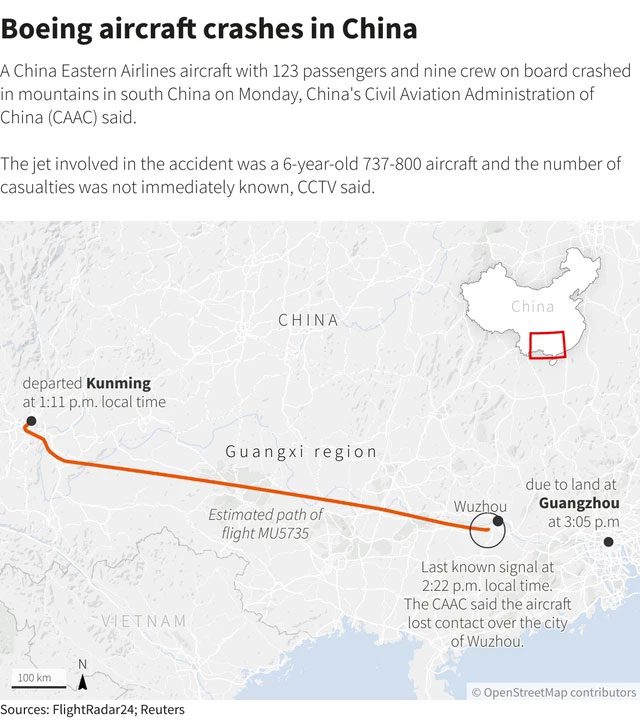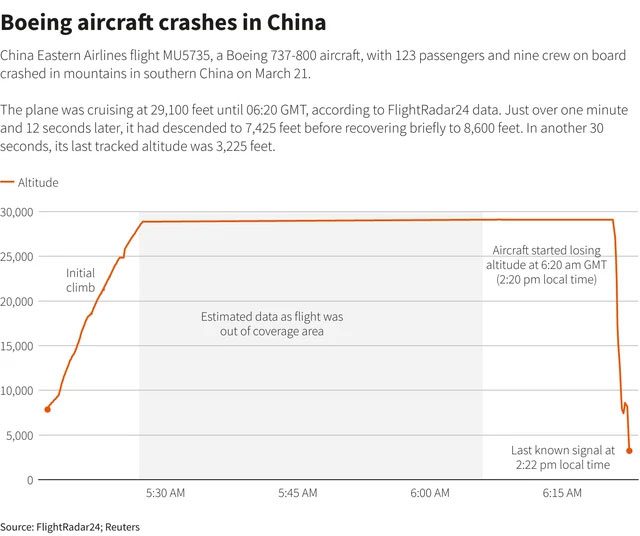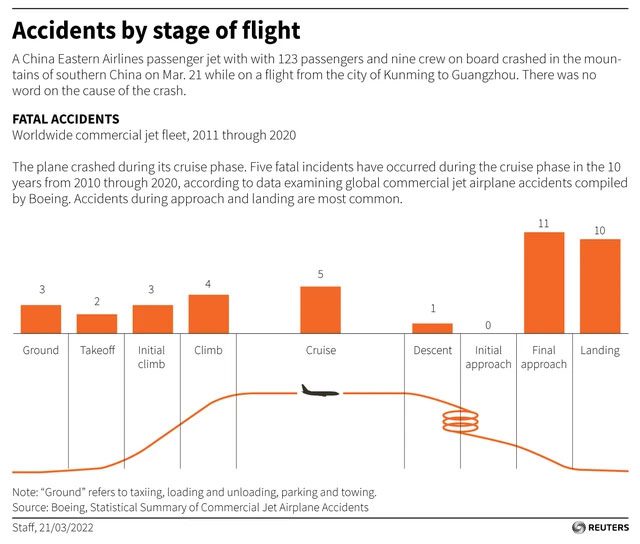Aircraft Nose-Dives Rarely Occur in Aviation.
Recently, a Boeing 737-800 from the Chinese airline China Eastern Airlines, carrying 132 passengers, crashed in the mountainous region of southern China on March 21, 2022. While media reports indicated no signs of survivors, experts began investigating why the aircraft fell vertically from an altitude of approximately 30,000 feet (over 9,000 meters).
According to aircraft engine specialist Arthur Rowe, who also teaches engineering at Cranfield University, airplanes can typically glide even if the engine suddenly fails in flight.

The flight path of the ill-fated aircraft.
“The cause may be due to loss of control or an unresponsive control system rather than engine failure. Inability to control the tail section could cause the aircraft to nose-dive,” Rowe observed.
In 2021, Boeing released a report indicating that only 13% of aircraft accidents from 2011 to 2020 occurred during flight, while 28% happened during the landing phase and 26% during touchdown.
Similarly, aviation expert Li Xiaojin from China noted that pilots often use autopilot during flight, making it challenging to determine what happened during the accident when the aircraft nosedived unexpectedly.
Currently, rescue and search teams are urgently tracing the aircraft’s black box to ascertain the cause. Authorities have also been ordered to investigate, but it is likely to take several months before a conclusion can be reached regarding the ill-fated aircraft.
Weather-related causes have been ruled out as conditions were mostly clear with good visibility in the Wuzhou area where the accident occurred.

The unusual accident where the aircraft fell vertically while in flight
The Boeing 737-800 is part of the 737 family, a widely used commercial aircraft developed since the 1960s for short to medium-haul flights.
The last accident involving a 737-800 occurred in August 2020 when an Air India Express aircraft encountered difficulties during landing due to heavy rain at Calicut International Airport, resulting in 21 fatalities.
Rare Occurrence
According to recorded data, the aircraft suddenly descended to 7,400 feet, then climbed back to 8,600 feet before nosediving again. Reuters reported that accidents occurring while the aircraft is in flight are quite rare as most incidents typically happen during landing or touchdown.
The accident caused Boeing’s stock price to drop by 3% in the same trading session, marking significant negative news for the aircraft manufacturer in the post-COVID-19 period. The aviation industry has faced two challenging years due to the pandemic, and just as it began to reopen, this incident occurred.

Most accidents occur during landing rather than in flight.
Immediately following the incident, China Eastern Airlines (CEA) grounded all 109 of its Boeing 737-800 aircraft until the investigation results are available. CEA’s stock price fell by up to 6.5% on the Hong Kong stock exchange.
According to media reports, CEA is the sixth-largest state-owned airline in the world by seating capacity. Meanwhile, the 737-800 model is also regarded as an efficient and safe aircraft with a low accident history.




















































